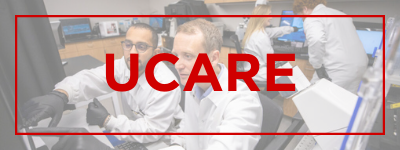UCARE: Undergraduate Creative Activities and Research Experiences

UCARE: Research Products
Date of this Version
Spring 4-13-2016
Document Type
Poster
Citation
UCARE Poster session, University of Nebraska-Lincoln Research Fair, April 2016, Lincoln, NE.
Abstract
During running exercise, trained runners will utilize both nasal and oral breathing mechanisms. However, during most clinical running tests, the breathing apparatus blocks the nasal pathway, therefore only allowing oral breathing. It has been suggested that a breathing apparatus that allows both nasal and oral breathing may provide an environment that is more similar to running outside of a lab setting. PURPOSE: The purpose of this study was to examine the patterns of responses for physiological variables during an incremental treadmill running exercise test to exhaustion utilizing both a traditional mouth piece (MP) and breathing mask (MSK) apparatus. METHODS: 16 subjects (MSK: mean ± SD age: 20.8 ± 1.3 yrs; body mass: 73.2± 9.7 kg; height: 175.3± 8.3 cm; MP: mean ± SD age: 21 ± 0.9 yrs; body mass: 62.2 ± 7.6 kg; height: 171.5 ± 6.4 cm) performed an incremental treadmill running test to exhaustion for the determination of maximal oxygen consumption (VO2peak), and peak values for heart rate (HRpeak), breathing frequency (Fbpeak), and respiratory exchange ratio (RERpeak). All submaximal values from the incremental treadmill test were normalized as a percent of their peak value (value corresponding to VO2peak), and data points were normalized across subjects and represented as a percent of time to exhaustion (Tlim: 20, 30, 40, 50, 60…100% Tlim). The first three minutes of exercise were eliminated for the initial physiological adjustment to exercise, so percent Tlim begins at 20% for all subjects. Statistical analysis included polynomial regression analyses to determine the patterns of responses for the physiological variables during runs in MP and MSK conditions. RESULTS: There were significant, positive, linear relationships for mean, normalized VO2 (r2 MP=0.99 and r2 MSK= 0.99; p < 0.01) and HR (r2 MP =0.97 and r2 MSK=0.99; p < 0.01) versus Tlim during the incremental tests to exhaustion. There were significant, positive, quadratic relationships for mean, normalized Fb (R2 MP=0.98 and R2 MSK=0.99; p < 0.05 and p < 0.01, respectively) and RER (R2 MP=0.99 and R2 MSK=0.99; p < 0.01) versus Tlim during the incremental tests to exhaustion. CONCLUSIONS: VO2 and HR followed the same pattern of response (linear), while Fb and RER exhibited quadratic patterns for both MP and MSK conditions. These findings indicate that there are differences in the patterns of response among physiological variables, but that there is no effect of breathing apparatus on the patterns of responses for VO2, HR, Fb, and RER during an incremental test to exhaustion. PRACTICAL APPLICATIONS: Previous studies have indicated that breathing apparatus does not affect peak values during an incremental test, the results of this project add to these findings in that breathing apparatus does not affect the patterns of responses for VO2, HR, Fb, and RER during a maximal treadmill running test. Furthermore, the findings of the present study suggest that the MP, which obstructs nasal breathing, does not affect variables typically measured during clinical running tests, and therefore, MP or MSKs may be used for testing purposes.
PowerPoint slide


Comments
Copyright © 2016 Rachel M. Lechtenberger, Kristen C. Cochrane, and Terry J. Housh